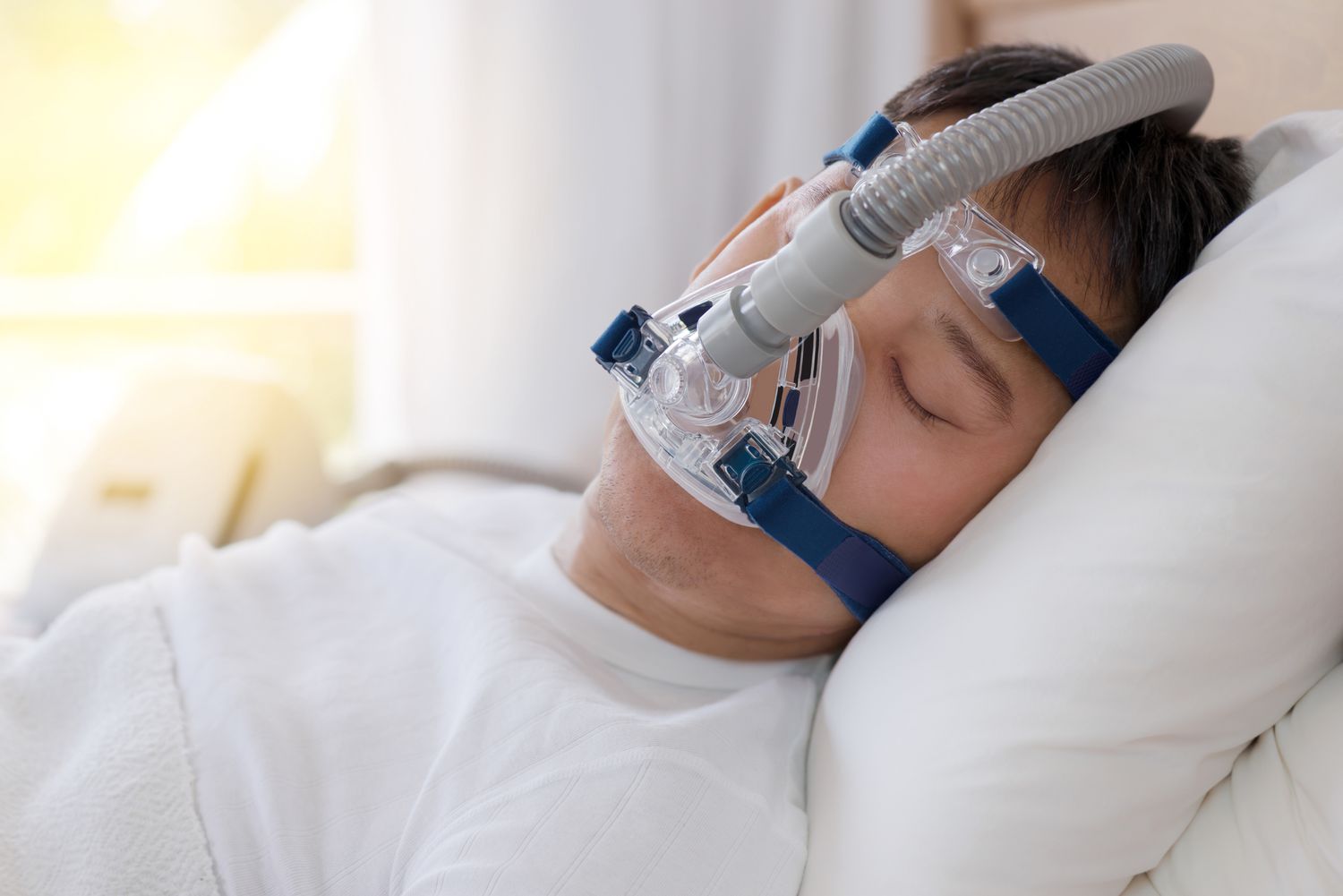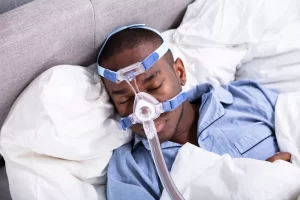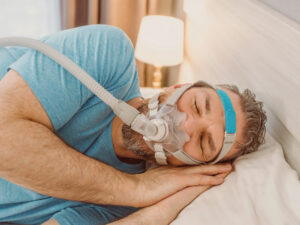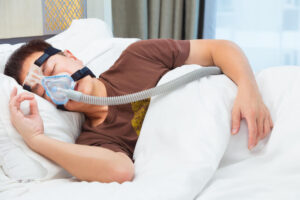Have you ever heard of a BiPAP machine? It’s an important medical device used to treat respiratory conditions such as sleep apnea, COPD, and other breathing disorders. If you’ve been diagnosed with one of these conditions, you may have encountered the term BiPAP in your doctor’s office. But what exactly is a BiPAP machine and how does it work? In this article, we’ll explore the ins and outs of this powerful tool for managing respiratory health.
BiPAP stands for Bilevel Positive Airway Pressure. This machine is designed to help people with severe breathing difficulties by providing consistent airflow throughout the night. The patient wears a mask that fits over their mouth and nose and is connected to the BiPAP machine. This helps keep airways open so they can breathe more easily while they sleep. In addition to helping patients get good quality sleep, BiPAP machines also provide relief from symptoms such as coughing, wheezing, and shortness of breath.
Now that you know a bit about BiPAP machines, it’s time to learn more about how they work and the benefits they offer for those living with respiratory disorders. We’ll discuss the different types available, how to choose the right one for your needs, and potential side effects associated with using a BiPAP machine. Read on to get started!
Definition Of A BiPAP Machine
A BiPAP machine is a type of breathing assistance device. It stands for Bilevel Positive Airway Pressure, and it is used to help people with respiratory issues such as sleep apnea. The machine works by delivering two levels of air pressure through a face mask that the user wears while sleeping. The higher pressure helps keep the airways open to allow easier breathing, and the lower pressure makes it easier for the user to exhale.
BiPAP machines are different than CPAP (Continuous Positive Airway Pressure) machines in that they deliver two levels of air pressure instead of one. This allows the user to adjust their breathing pattern more easily; BiPAP machines offer greater flexibility when it comes to providing relief from certain types of breathing problems. In addition, the lower pressure in BiPAP machines helps reduce the chance of discomfort or fatigue due to excessive air pressure on the face and body.
BiPAP machines can be used both at home and in a hospital setting, depending on the individual’s needs. They are generally prescribed by a doctor in order to treat sleep-related symptoms like snoring or difficulty breathing during sleep.
How Does A BiPAP Machine Work?
A BiPAP machine, or bilevel positive airway pressure machine, is a medical device used to treat breathing disorders like sleep apnea. It delivers two alternating levels of air pressure – higher pressure when inhaling and lower pressure when exhaling – to keep airways open and promote regular airflow. This helps reduce the pauses in breathing that characterize sleep apnea.
The BiPAP machine works by using a mask placed over the nose and mouth that’s connected to two tubes supplying air from the device. The user breathes normally through the mask, and the machine automatically adjusts the pressure as needed. It also provides humidified air to prevent dryness in the nose and throat while sleeping.
BiPAP machines are typically used for people with more severe forms of sleep apnea who have difficulty using CPAP (continuous positive airway pressure) machines. In addition, they may be prescribed for those with other respiratory issues such as COPD (chronic obstructive pulmonary disease) or neuromuscular diseases like ALS (amyotrophic lateral sclerosis). With proper use of a BiPAP machine, users can experience improved quality of sleep and overall health benefits.
Modes Of Operation
A BIPAP machine is a type of ventilator that assists in the delivery of air to the lungs. There are two types of operation modes available for BIPAP machines: CPAP and Bi-level PAP.
CPAP stands for Continuous Positive Airway Pressure, and it works by providing a continuous stream of pressurized air into the patient’s airway. The pressure helps to keep the airways open and prevent collapse or obstruction, allowing the patient to breathe more easily.
Bi-level PAP stands for Bilevel Positive Airway Pressure, and it works differently than CPAP. With bilevel PAP, two different pressures are delivered to the patient: one pressure when inhaling (called IPAP) and another when exhaling (called EPAP). This variation in pressure helps patients achieve better ventilation throughout their breathing cycle.
Both CPAP and Bi-level PAP can be used to treat sleep apnea, COPD, asthma, neuromuscular disorders and other respiratory conditions. Depending on individual needs, doctors may prescribe either mode or both. It is important to follow your doctor’s instructions carefully when using a BIPAP machine so that you get the best possible outcome from your treatment.
Benefits Of Using A BiPAP Machine
Using a BiPAP machine can provide numerous benefits to those suffering from sleep apnea. It is much quieter than a CPAP machine, as it operates at a lower pressure. This makes it more comfortable to use and less likely to disturb the user’s sleep. Furthermore, BiPAP machines are designed with two settings – one for inhaling and one for exhaling – which can help improve the flow of oxygen while reducing the amount of work needed by the respiratory muscles.
BiPAP machines can also be used to treat other conditions such as chronic obstructive pulmonary disease (COPD) or heart failure. In these cases, it may help to improve symptoms such as shortness of breath, fatigue, and difficulty sleeping. Additionally, due to its dual settings and adjustable pressure levels, it can be tailored specifically to each patient’s individual needs.
Lastly, using a BiPAP machine is relatively easy for users who have had some experience with CPAP therapy previously. The setup process is similar and most machines have a helpful user manual that explains how to set it up properly. With regular use and proper maintenance, users should expect good results from their BiPAP machine over time.
Common Applications
BiPAP machines are often used to treat a variety of respiratory conditions. As such, they have many applications for a range of patients. From those with chronic obstructive pulmonary disease (COPD) to those suffering from sleep apnea, BiPAP machines can be used to improve breathing and provide relief from symptoms.
BiPAP machines are most commonly used to treat sleep apnea. Sleep apnea is characterized by episodes of interrupted or shallow breathing during sleep, which can lead to excessive daytime fatigue and other serious health issues. By providing continuous positive airway pressure (CPAP), the machine helps keep the airways open throughout the night, allowing for more restful sleep and improved overall health.
BiPAP machines are also increasingly being used in hospitals as a means of providing ventilator support for critically ill patients. The ability of the machine to deliver precise levels of air pressure makes it an ideal choice for those requiring respiratory assistance in order to survive severe medical events. In addition, BiPAP machines offer patients greater comfort than traditional mechanical ventilators, making them an attractive option for hospital use.
Components Of A BiPAP Machine
A BiPAP machine is composed of several components that work together to provide effective breathing support. The main component is the mask, which rests over the patient’s nose and mouth. This mask is connected to a tube that carries air from the machine to the patient. The tube is typically made of a flexible material, such as silicone or rubber, so it can be adjusted for maximum comfort. The other components include an air compressor, a humidifier chamber, and a control panel that allows the user to adjust various settings.
The compressor sends pressurized air through the tube and into the mask so it can be inhaled by the patient. The humidifier adds moisture into the air stream, helping to keep airways moist and prevent irritation. On the control panel, users can adjust settings like pressure level, ramp time (the amount of time before full CPAP pressure is reached), and bilevel settings (adjusting one setting for inhalation and another for exhalation).
BiPAP machines are an important tool in helping those with breathing difficulties achieve better sleep quality. By providing comfortable air pressure levels and customized settings, they help keep airways open while sleeping so breathing can be easier and uninterrupted.
How To Set Up A BiPAP Machine
Setting up a BiPAP machine is relatively simple. The first step is to identify where the machine will be located. It should be placed somewhere that is easily accessible and away from any sources of moisture. Once the location has been chosen, it’s time to plug in the power cord and connect it to the wall outlet.
The next step is to assemble all the components of the BiPAP machine. This includes connecting the tubing, mask, and humidifier chamber. All components should be connected securely and fitted properly for optimal performance. Additionally, it’s important to ensure that all parts are clean before use.
After everything has been set up, it’s time to turn on the machine and adjust all settings according to your needs. The user manual provided by the manufacturer should have detailed instructions on how to use and operate the device correctly. With proper setup and usage, a BiPAP machine can provide relief from sleep apnea symptoms for many people suffering from this condition.
When Should You Use A BiPAP Machine?
A BiPAP machine is a device used to treat sleep apnea. It delivers pressurized air to the user’s lungs, which helps them breathe easier and more deeply while sleeping. It can also be used to help people with other respiratory conditions such as emphysema or chronic bronchitis. To determine if a BiPAP machine is right for you, it’s important to understand when and why you should use one.
One of the primary reasons why someone might need a BiPAP machine is if they have been diagnosed with obstructive sleep apnea (OSA). OSA occurs when the airway collapses during sleep, preventing oxygen from getting properly into the lungs. A BiPAP machine can provide extra pressure to keep the airway open and allow for proper breathing during sleep.
Another reason why someone might need a BiPAP machine is if they have chronic lung diseases that make it difficult for them to get enough oxygen into their lungs on their own. In this case, the BiPAP machine can provide additional airflow that can help ease breathing difficulty and improve quality of life.
In addition, some people may use a BiPAP machine temporarily after surgery in order to help them recover more quickly and safely. This is especially common after surgeries involving the chest area or those that require general anesthesia. By providing extra airflow, a BiPAP can reduce fatigue and discomfort associated with recovery.
Overall, a BiPAP machine can be an effective tool for treating sleep apnea and other respiratory conditions. Before deciding whether or not one is right for you, it’s important to talk with your doctor about your specific needs so they can recommend the best course of treatment.
Risks And Side Effects
The use of a BiPAP machine is generally safe and well tolerated, but there are some potential risks and side effects associated with its use. In some cases, users may experience dryness in their nose or throat as a result of the moisture-depleted air delivered through the mask. In addition, some people may find that the pressure provided by the machine can cause discomfort or pain in their ears. Moreover, if the settings on the machine are not correct for an individual’s needs, they may experience difficulty exhaling against the pressure.
Another potential side effect is that users may become dependent on the machine to breathe and could suffer withdrawal symptoms if it is discontinued suddenly. Finally, BiPAP machines must be regularly maintained to ensure they remain safe and effective. This involves cleaning parts such as masks and tubes, replacing filters, and checking settings to make sure they are appropriate for each user’s condition. It is important to follow these maintenance instructions to reduce possible health risks associated with using a BiPAP machine.
Disadvantages Of Using A BiPAP Machine
Despite the potential benefits of a BiPAP machine, it does have some drawbacks. One of the main disadvantages is that not everyone can use this type of machine. People with certain medical conditions, such as COPD, may not be able to tolerate the pressure levels provided by the BiPAP machine. Additionally, people with neuromuscular diseases or other neurological disorders may find that they are unable to effectively use the machine. Another drawback is that using a BiPAP machine can be uncomfortable and noisy. The mask can be awkward to wear and some people may find it difficult to adjust to breathing through the machine. The noise generated by the machine can also disrupt sleep for both the user and their sleeping partner. It’s also important to note that regular maintenance and cleaning of the equipment is essential for safe and effective use of a BiPAP machine. Without proper maintenance, bacteria and other contaminants can build up in the tubing and mask, which can lead to health complications. Finally, it’s important to consider insurance coverage when deciding whether or not to purchase a BiPAP machine; many insurers will not cover these machines unless they are prescribed by a doctor due to their cost. Ultimately, while there are potential benefits associated with using a BiPAP machine, there are also several drawbacks that must be considered before making an investment in one of these machines.
Caring For Your BiPAP Machine
Caring for your BiPAP machine is essential to ensure it works properly and safely. It’s important to clean the mask, tubing, and humidifier chamber regularly. The mask should be washed with a mild soap and warm water in between uses; the tubing should be wiped down with a cloth dampened with soap and water; and the humidifier chamber should be emptied, cleaned, and refilled with clean water daily.
It’s also important to inspect your BiPAP machine for any signs of damage or malfunction. If you notice any loose or frayed parts, replace them immediately or contact your healthcare provider for help. Additionally, check the filter regularly for dirt or debris and replace it when necessary.
Finally, store your BiPAP machine in a clean, dry place away from dust and other airborne particles that could interfere with its performance. Keep pets away from it as well since animals may damage the device or cause it to malfunction.
Conclusion
In conclusion, a BiPAP machine is an invaluable tool for managing breathing-related conditions. It can provide a wide range of benefits, including improved oxygenation and reduced symptoms of sleep apnea. While there are some potential risks and side effects associated with the use of a BiPAP machine, these can usually be minimized by following the instructions provided by your doctor or healthcare provider. It’s important to discuss any risks or concerns with your doctor before beginning treatment with a BiPAP machine. Lastly, taking good care of your BiPAP machine is essential in order to ensure that it functions correctly and provides you with the best possible outcome. With proper use and maintenance, you should be able to enjoy the many benefits that a BiPAP machine has to offer.




